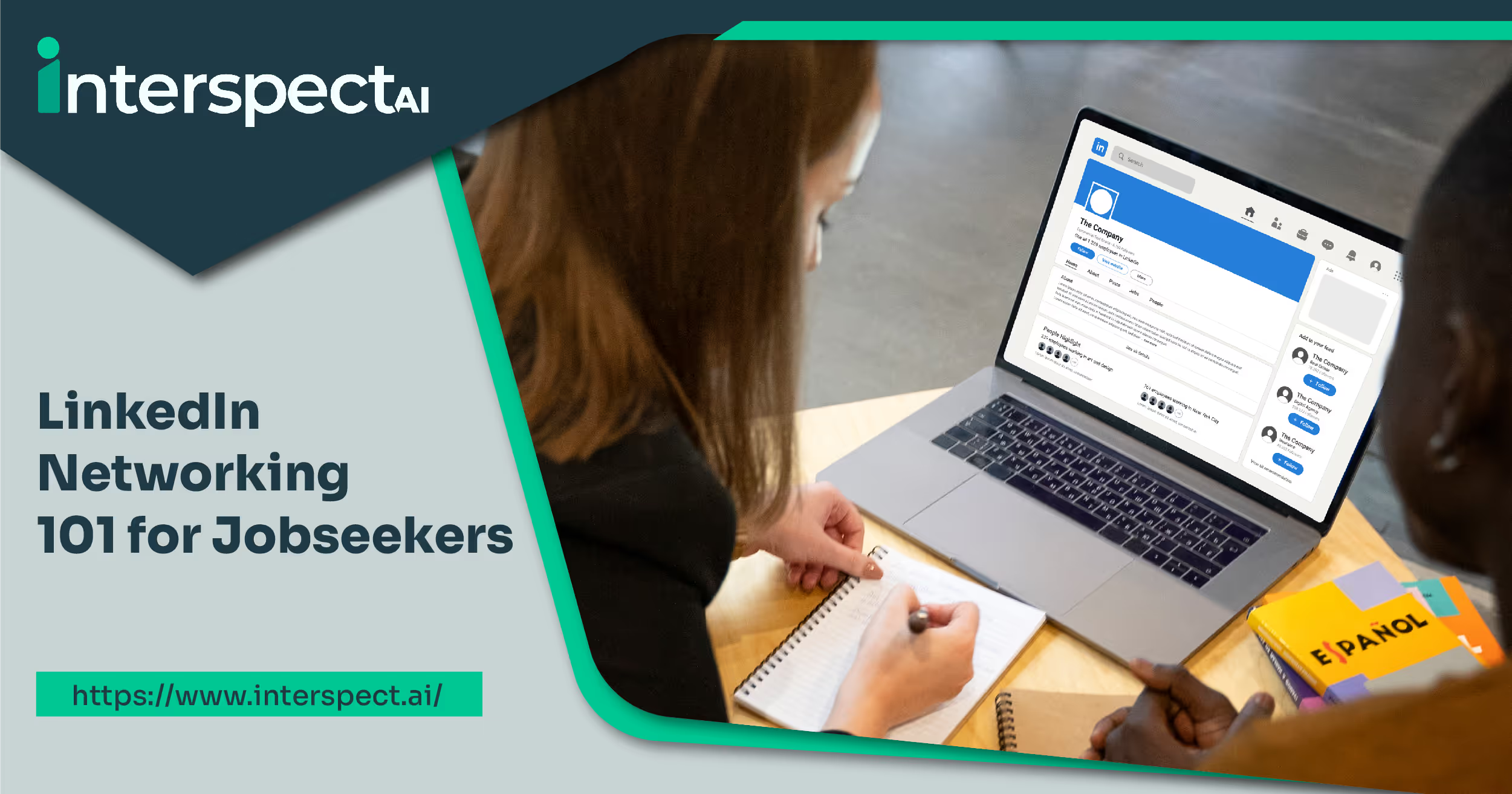LinkedIn Networking 101 for Jobseekers - The Right Way to Get Replies in 2025



In 2025, careers don’t just start with job applications, they start with conversations. And LinkedIn is where most of them happen.
Before you even hit ‘apply’, consider opening a conversation, as profiles rarely get noticed by chance, but a thoughtful message changes that. Which means the way you reach out is just as important as your resume.
Done right, networking messages open doors. Done wrong, they vanish into the void.
This guide blends strategy with practical examples to show you how to network on LinkedIn the right way - how to prepare, what to say, when to say it, and how to follow up without being pushy.
1. Start with a strong foundation - your profile
Before you message anyone, your LinkedIn profile must signal professionalism and intent. Think of it as your landing page - the first thing people check before deciding if they should reply.
Because even the most thoughtful message can fall flat if your profile looks incomplete or outdated.
Quick actions
- Use a professional photo and custom banner.
- Write a headline that blends skills with personality (e.g., “Data Analyst | Turning messy data into clear business decisions”).
- Create an About section that establishes your purpose and value.
Do - Keep your experience up to date and results-driven.
Don’t - Leave your headline as just “Job Title at Company.”
2. Warm up first - engage before messaging
Cold outreach that works isn’t… well, cold.
When your name is already familiar from comments or likes, your message feels less like a stranger’s knock and more like a continuation of a conversation.
Tactics that work
- Like or comment thoughtfully on their content 24–48 hours before reaching out.
- Try adding insights in your comments instead of a generic “Great post!”
Example: Comment: “Loved your take on AI in marketing workflows — do you think small companies can adopt it as easily as large enterprises?”. And DM: “Hey, I dropped a note on your post earlier — would love to continue that conversation here.”
Do: Build visibility first.
Don’t: Appear out of nowhere asking for a favour.
3. Personalize based on connection, not position
Generic messages get ignored. Specific ones get replies.
Personalization shows effort and respect for their time.
Effective approaches
- Mention a mutual group, alma mater, or event.
- Reference their recent post or achievement.
- Ask a thoughtful, specific question.
Example: Instead of: “I’d like to connect.”, try: “Hi Sydney, I enjoyed your article on product-led growth — especially the part about onboarding flow. Would love to connect and exchange ideas.”
Do: Keep it relevant.
Don’t: Overdo flattery or use copy-paste intros.
4. Time your message and send when it’s most visible
Even the perfect note won’t get replies if it’s buried. Sending when inboxes are less flooded increases your visibility.
Research shows response rates are higher between Tuesday–Thursday, 9–11 AM (local time).
Do: Aim for mid-mornings, mid-week.
Don’t: Blast requests late at night or Friday evenings when people are mentally checked out.
5. Craft a multi-step outreach plan with value in every touch
Networking isn’t one-and-done. Think in sequences.
Most replies come after the second or third touch, not the first. A polite follow-up doubles your chances.
Sample sequence
- Connection request: “Loved your take on X, would love to connect.”
- After acceptance: Share a thoughtful question or idea related to their work.
- Follow-up (5–7 days later): Add new value (a resource, article, or observation).
Example: “Hi [Name], I came across this [article/tool/insight] on [topic you both care about], and it instantly reminded me of your post on [specific point they made]. Thought you might find it useful. Curious to hear your perspective on it!”
Do: Space out your touches and add fresh value each time.
Don’t: Just say “following up” without substance.
6. Think laterally and reach out beyond recruiters
Recruiters aren’t your only gateway. Lateral connections often give you the best insights, referrals, and mentorship.
Who to message
- People in similar roles at companies you admire.
- Industry peers outside your direct field but with overlapping interests.
Example: “Hi James, I noticed we both work in customer success. Curious how your team is approaching AI-driven onboarding — it’s something we’re exploring as well.”
Do: Reach out sideways, not just upward.
Don’t: Limit yourself to hiring managers only.
7. Be human and add empathy & authenticity
At the end of the day, networking is just a conversation. Authenticity stands out in a sea of robotic copy-paste outreach.
How to show up
- Share your genuine reason for connecting.
- Keep your tone friendly but respectful.
- Sprinkle in light compliments when deserved.
Example: “I really admire how you’ve built your career around design thinking — it’s something I’m working on too. Would love to hear how you got started.”
Do: Write like a human, not a script.
Don’t: Sound transactional or desperate.
Quick Reference Table | Networking Methods at a Glance
Why this works and why it matters
In the current LinkedIn space, networking isn’t about mass messaging; it’s about meaningful messaging.
It’s empathy, context, and relevance. It’s the shift from “I need something” to “Let’s exchange something valuable.”
Do this right, and LinkedIn stops being just a platform. It becomes your most powerful career-enhancing tool.
And speaking of career-enhancing tools... if you master the art of networking - you’ll land more interviews. Master the art of interviewing - and you’ll land the job. SpectraSeek is here to help with the second part. Check it out!
Subscribe to The InterspectAI Blog


%201.svg)






